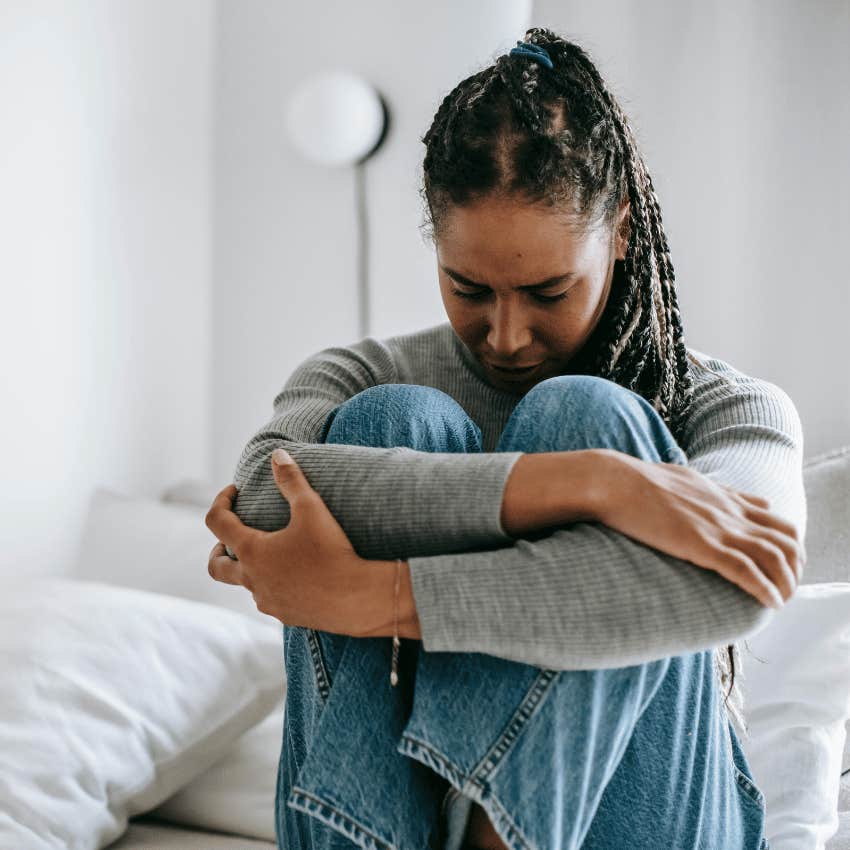After Getting An IUD, I’m Convinced No One Cares About Women’s Health
The level of cervical dilation I endured was similar to what women feel during childbirth.
 halfpoint | Canva
halfpoint | Canva Editor's Note: This is a part of YourTango's Opinion section where individual authors can provide varying perspectives for wide-ranging political, social, and personal commentary on issues.
The first time I heard about the copper IUD, I felt hope, relief, and empowerment. Finally — a long-term birth-control option that didn’t involve hormones and was more than 99% effective at preventing pregnancy. I called a nearby OBGYN right away, but there was one small hiccup: All the female gynecologists were booked for the next 10 months.
“Would you be opposed to a male doctor?” the secretary asked.
“Not at all,” I said. “I’ll take the first available appointment.”
I showed up for my preliminary consultation. I asked every question I had, including “Will this hurt?” and “What should I do to prepare?” No, and nothing. I read the pamphlet they gave me front-to-back — twice.
Then, a month later, as I lay there with my legs in stirrups, I asked, “I have an Advil in my bag. Should I take it, just in case?”
“Nope. You won’t need it,” the doctor said. The IUD wouldn’t go in. He had to dilate me twice. I saw stars.
Inserting the IUD was the worst pain I’d ever felt in my entire life.
— and I once got two wisdom teeth pulled stone-cold sober. According to the medical assistant, the level of cervical dilation I endured was similar to what women feel during childbirth.
 JLco Julia Amaral | Shutterstock
JLco Julia Amaral | Shutterstock
Days later, once I could walk again, I did some research; not the promotional materials the doctor had given me to sell a product, but legitimate science. According to studies, nearly 60% of people who haven’t given birth will experience moderate to severe discomfort during IUD insertion — and as many as 17% will feel agony. Anecdotally, tons of women on Reddit describe the procedure as “the single most painful thing [they’ve] ever experienced.”
Why hadn’t anyone mentioned how painful getting an IUD put in was to me?
“It’s archaic,” said my friend, who’s a Certified Registered Nurse Anesthetist. “They’ll put you under for an MRI because you’re claustrophobic. They’ll knock you out to get your teeth cleaned if you’re scared of the dentist. But no one gives a sh-t about pain management for women’s procedures.”
The most messed up part? If I had to get my IUD put in all over again, dilation and all, I would do it — especially now that our country has revoked a woman’s right to choose. I’m desperate to maintain autonomy over my body, my health, and my future, no matter what it costs. It just would’ve been nice to know.
This wasn’t the first time I’d been gaslit by a gynecologist.
I’ve known since I was 11 that I didn’t want children, so I’ve tried a plethora of birth control options — including the pill. I took it for two years starting at age 24, but for me, the side effects were awful. It tore up my stomach and made me depressed and anxious.
“You’re just going through puberty,” said my gynecologist at the time. “Give your hormones longer to balance out.”
“Puberty? I’m twenty-six years old.” Spoiler: She hadn’t even looked at my file.
Once again, the primary concern was selling a product.
A product that has horrifying origins as a drug that was tested in high doses on impoverished women in Puerto Rico and asylum patients without consent. A product with potentially dangerous long-term consequences on women’s health, including an increased risk of IBS and a 79% increase in depression. But rather than being informed of those risks, I (like so many other women) was gaslit into believing it was all in my head.
 Alex Green | Pexels
Alex Green | Pexels
Meanwhile, in 2016, researchers discovered a male birth control shot that effectively prevented pregnancy by lowering sperm count. Most side effects were minor and included acne and pain at the injection site. Then, out of 320 participants, one man experienced depression. They stopped the study and killed the drug.
Women’s health and well-being have never been a priority.
Scientists now report a huge gender gap in medical research. The vast majority of studies have historically been conducted on and for white men. It wasn’t until 1993 that Congress decided women and minorities had to be included in clinical research.
To this day, women’s health research is overlooked and underprioritized. In 75% of cases, diseases that affect women lack funding, while diseases that affect men are overfunded. Financial support for erectile dysfunction research is six times higher than for endometriosis (a build-up of uterine tissue that causes debilitating pain for 190 million women). And it’s not just women’s bodies. It’s also the products we use on and inside them.
One study just found toxic metals in our tampons.
Earlier this week, a study from Environment International made headlines when researchers found lead and arsenic in 30 different tampons. Organic, non-organic, name-brand, store-brand — all of them had metalloids deemed unsafe for human bodies and linked to reproductive health issues in women.
When interviewed about these findings for CNN, Kathrin Schilling (assistant professor of environmental health sciences at Columbia University’s Mailman School of Public Health) said:
“It’s important to note that arsenic [and lead] shouldn’t be present in tampons at all, and we don’t yet understand the effects of vaginal exposure since it hasn’t been studied. […] Obviously, the next step is to do research that would show if the metals leach from the tampon into the body.”
 Polina Zimmerman | Pexels
Polina Zimmerman | Pexels
I’m not holding my breath for things to change with IUDs.
I’m also not taking any chances. While companies have sworn up and down for years that tampons were safe despite dyes, fragrances, and forever chemicals, countless women were adamant that these products worsened cramps and wreaked havoc on their uteruses.
And once again, women were gaslit into believing it was all in their heads. I switched to a silicone menstrual cup years ago and was astounded when my cramps suddenly disappeared. Since silicone has been tested and deemed safe for men’s penile inserts, I trust it. A womb is one thing, but science wouldn’t dare mess around with a man’s penis.
Maria Cassano is a writer, editor, and journalist whose work has appeared on NBC, Bustle, CNN, The Daily Beast, Food & Wine, and Allure, among others. She's in the process of publishing her memoir, which you can learn more about here.

